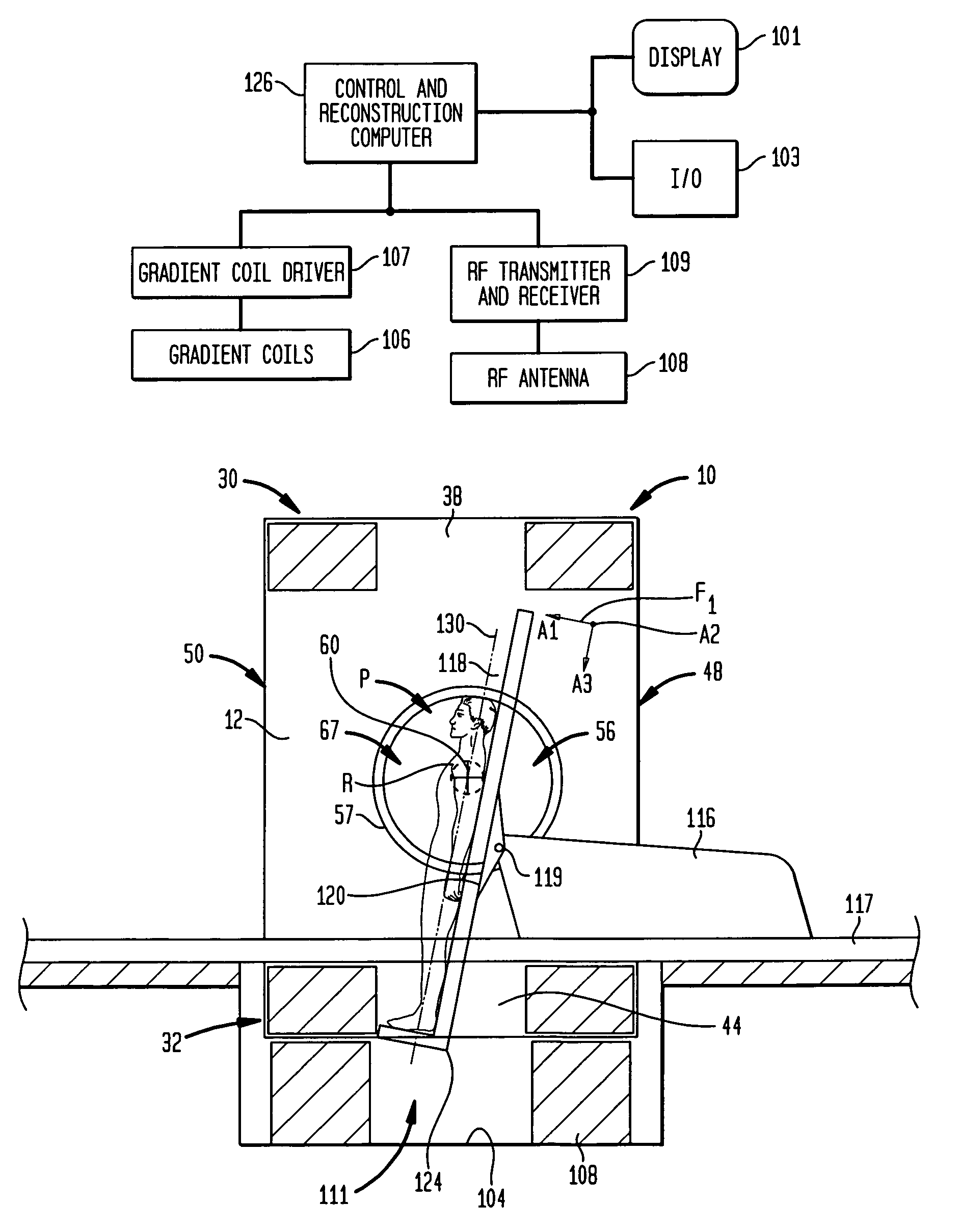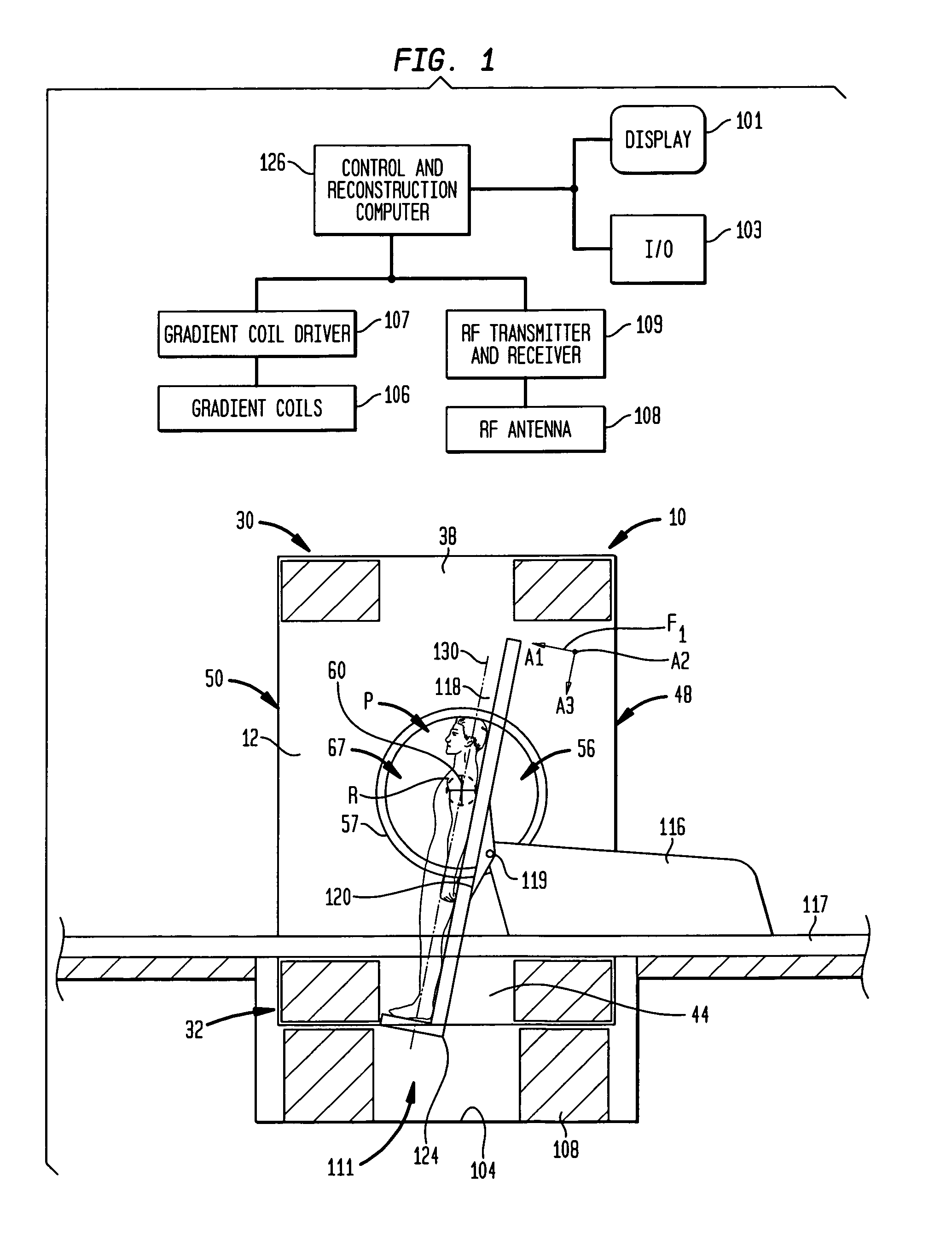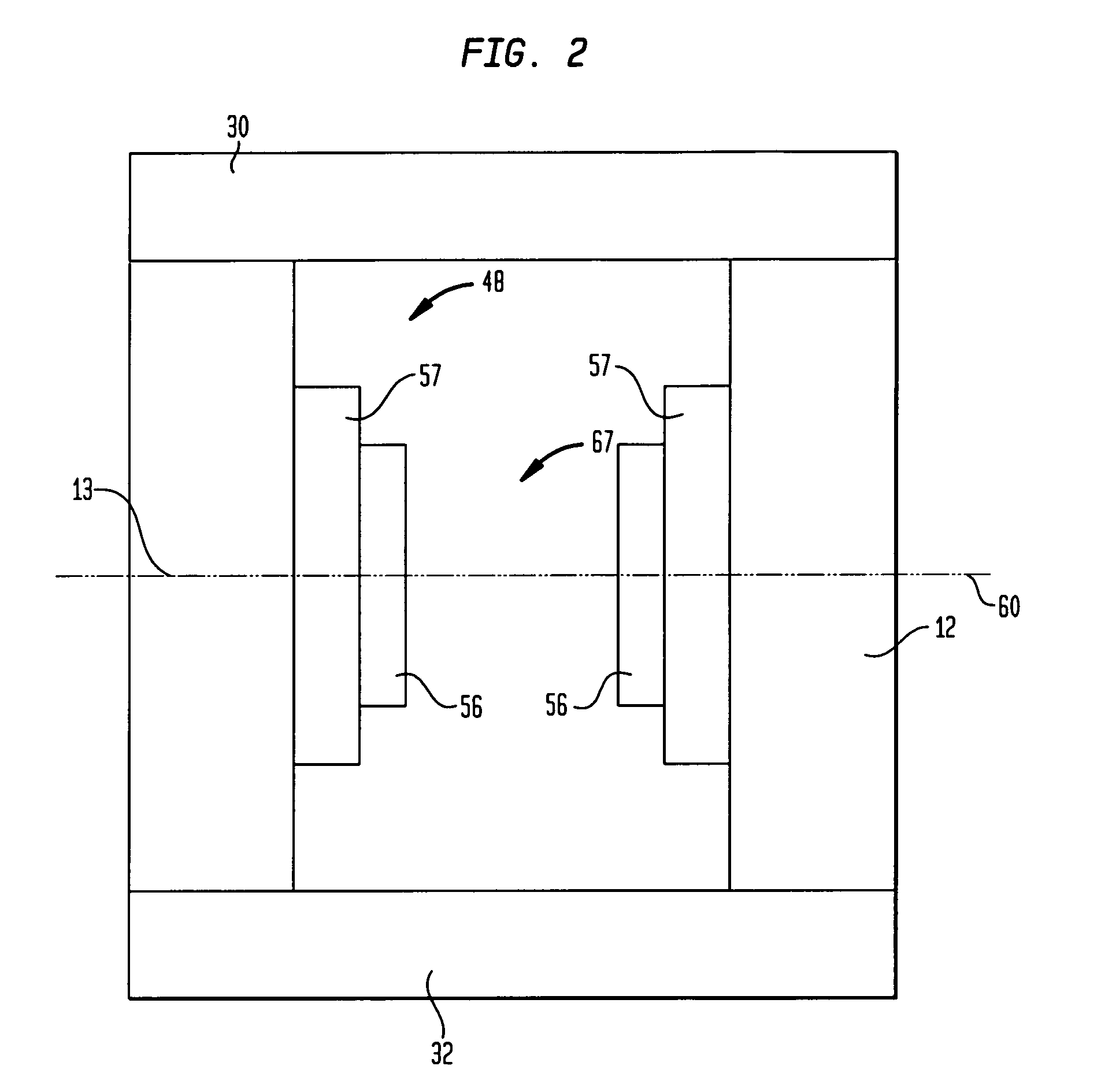Temporal magnetic resonance imaging
- Summary
- Abstract
- Description
- Claims
- Application Information
AI Technical Summary
Benefits of technology
Problems solved by technology
Method used
Image
Examples
Embodiment Construction
[0026]Although many different types of magnetic resonance imaging apparatus can be used in accordance with the present invention, one apparatus used in one embodiment of the present invention is depicted in FIG. 1. This apparatus includes a ferromagnetic frame 10. As described in greater detail in the '946 application, the frame 10 is generally in the form of a hollow rectangular solid and includes a top flux return member 30 defining the top wall of the frame, a bottom flux return member 32 defining the bottom wall of the frame and a pair of generally vertical side walls 12 and 13 (FIG. 2) defining the sides of the frame, one such side wall 12 being visible in FIG. 1. The frame has large patient entry openings 48 and 50 (FIG. 1) at front and back sides of the frame, i.e., the vertical sides which are not occupied by side wall 12 and the opposite side wall. The top flux return member 30 defines opening 38 in the top wall of the frame, whereas the bottom flux return member 32 defines...
PUM
 Login to View More
Login to View More Abstract
Description
Claims
Application Information
 Login to View More
Login to View More - R&D
- Intellectual Property
- Life Sciences
- Materials
- Tech Scout
- Unparalleled Data Quality
- Higher Quality Content
- 60% Fewer Hallucinations
Browse by: Latest US Patents, China's latest patents, Technical Efficacy Thesaurus, Application Domain, Technology Topic, Popular Technical Reports.
© 2025 PatSnap. All rights reserved.Legal|Privacy policy|Modern Slavery Act Transparency Statement|Sitemap|About US| Contact US: help@patsnap.com



